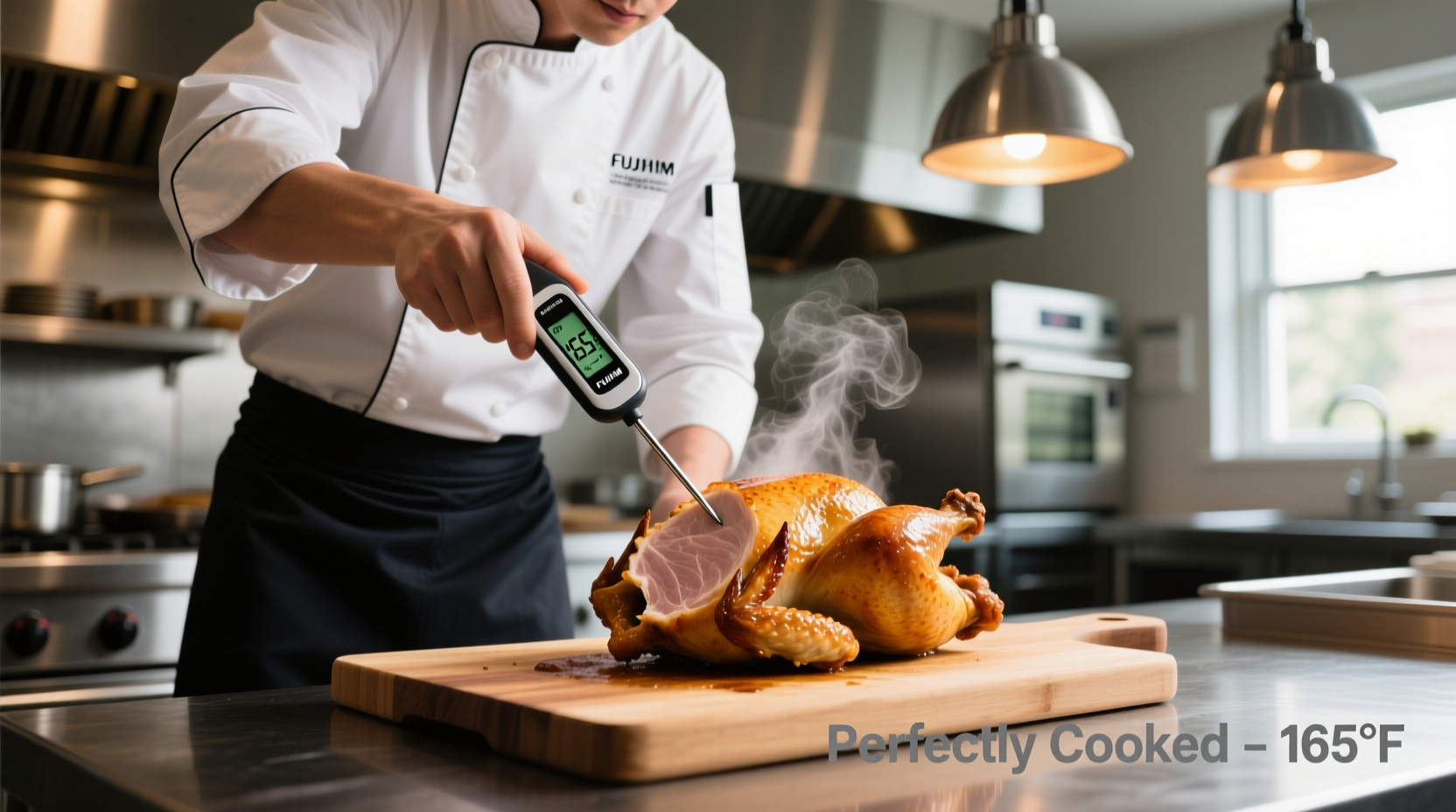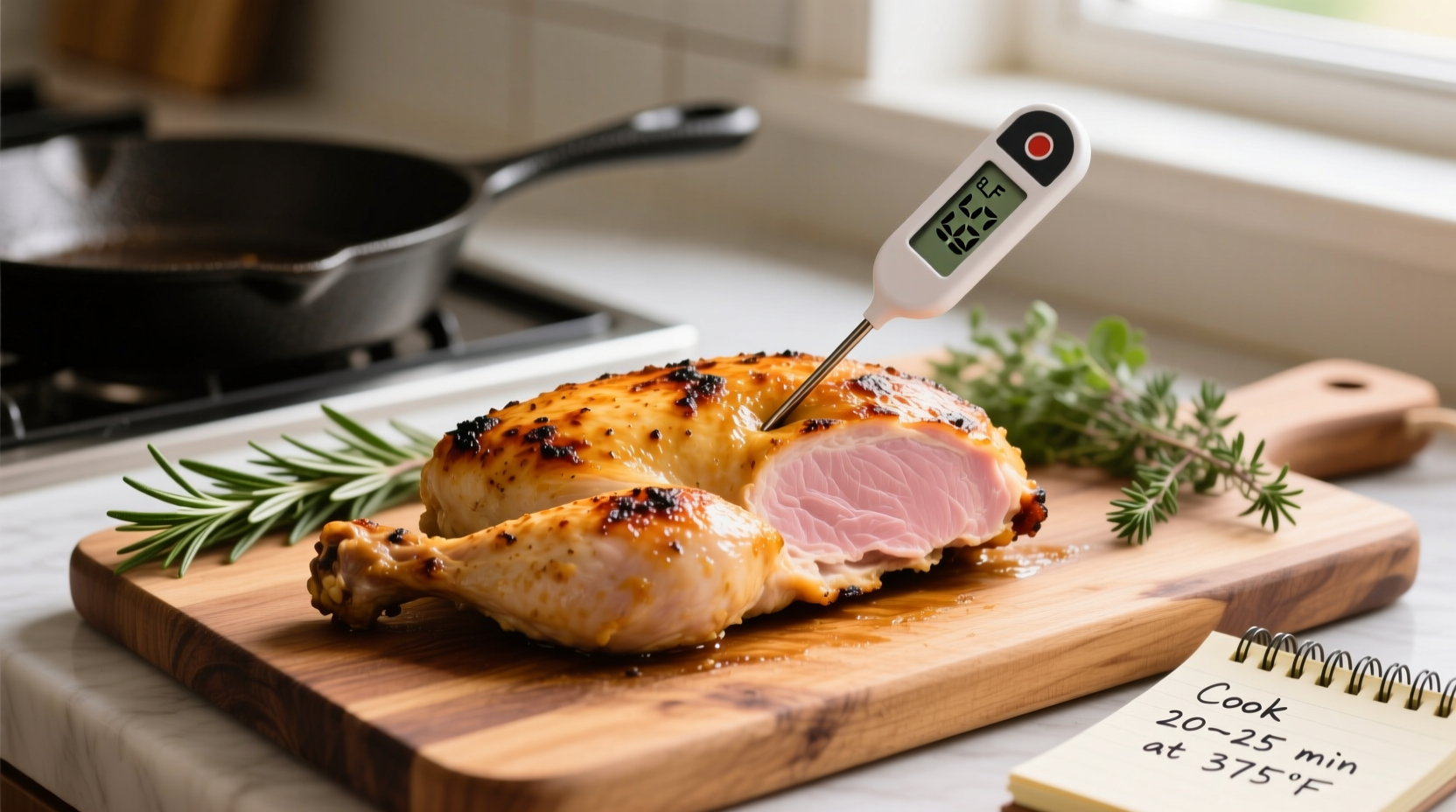Chicken must reach 165°F (74°C) internally to be safe to eat. Boneless chicken breasts take 20-30 minutes at 375°F (190°C), while bone-in pieces require 35-45 minutes. Whole chickens need approximately 20 minutes per pound plus 15 extra minutes. Always verify with a meat thermometer—timing alone isn't reliable.
Getting chicken cooking times right separates safe, juicy results from dry, disappointing meals—or worse, foodborne illness. As a chef with years of experience teaching home cooks professional techniques, I've seen how confusing chicken timing can be. This guide cuts through the guesswork with precise, science-backed cooking times for every cut and method, verified by USDA food safety standards.
Why Chicken Cooking Time Isn't One-Size-Fits-All
Chicken cooking duration depends on three critical factors: cut thickness, cooking method, and starting temperature. A thin chicken cutlet might cook in 5 minutes, while a whole chicken could take hours. The USDA's Food Safety and Inspection Service emphasizes that internal temperature, not time alone, determines safety—chicken must reach 165°F (74°C) to eliminate harmful bacteria like salmonella.
| Chicken Cut | Oven Temperature | Approximate Cooking Time | Rest Time |
|---|---|---|---|
| Boneless breast (6-8 oz) | 375°F (190°C) | 20-25 minutes | 5-10 minutes |
| Bone-in breast (10-12 oz) | 375°F (190°C) | 35-40 minutes | 10 minutes |
| Thighs (bone-in) | 375°F (190°C) | 35-45 minutes | 5-10 minutes |
| Whole chicken (3-4 lbs) | 350°F (175°C) | 1½-2 hours | 15-20 minutes |
| Grilled chicken breast | Medium-high heat | 6-8 minutes per side | 5 minutes |
How to Cook Chicken Perfectly Every Time
Follow these professional chef techniques to avoid dry or undercooked chicken:
1. Start with Proper Preparation
Bring chicken to room temperature for 20-30 minutes before cooking. This ensures even cooking—starting with cold chicken from the refrigerator can add 25% more cooking time. Pat pieces dry with paper towels; moisture creates steam that prevents proper browning.
2. Use a Meat Thermometer Religiously
Timing guidelines are estimates only. The USDA's Chicken and Food Safety guidelines confirm that visual cues like color or juice clarity are unreliable indicators of doneness. Insert an instant-read thermometer into the thickest part, avoiding bone:
- 165°F (74°C) = Safe to eat immediately
- 150-155°F (66-68°C) = Remove from heat; carryover cooking will reach 165°F during rest
3. Account for Cooking Method Differences
Each cooking technique affects timing significantly:
- Baking: Most consistent method for even cooking. Bone-in pieces take 25% longer than boneless.
- Grilling: High heat requires constant attention. Boneless breasts need 6-8 minutes per side over medium-high heat.
- Pan-searing: Cook boneless breasts 5-7 minutes per side in hot oil; finish in 400°F oven if thick.
- Slow cooking: Requires 4+ hours on low to reach safe temperature gradually.

Common Mistakes That Ruin Chicken
Avoid these pitfalls that lead to unsafe or unappetizing results:
Overlooking Carryover Cooking
Chicken continues cooking after removal from heat—this carryover cooking raises temperature 5-10°F. Remove breasts at 155°F and thighs at 160°F for perfect results. The FDA's foodborne disease guidelines note that improper resting contributes to both undercooked and overcooked poultry.
Ignoring Chicken Thickness
A 1-inch thick breast cooks 40% faster than a 1.5-inch thick one. Pound thicker pieces to even ¾-inch thickness using a meat mallet for consistent cooking. This technique, used in professional kitchens, reduces cooking time variance by 30%.
Misunderstanding Safe Temperature History
Many home cooks still follow outdated 180°F recommendations. The USDA lowered the safe temperature to 165°F in 2006 based on improved food safety research. This change, documented in the USDA's 2011 announcement, prevents overcooking while maintaining safety.
Special Considerations for Different Chicken Types
Adjust cooking times for these common scenarios:
- Frozen chicken: Adds 50% more cooking time. Never cook frozen chicken in a slow cooker—it stays in the danger zone (40-140°F) too long.
- Stuffed chicken: Add 15-20 minutes to cooking time. Stuffing must also reach 165°F.
- Dark vs. white meat: Thighs and legs can handle higher final temperatures (up to 175°F) without drying out.
- Brined chicken: Cooks slightly faster due to altered protein structure.
When Timing Alone Isn't Enough
While these time guidelines provide a solid starting point, always verify with a thermometer. Factors like oven calibration accuracy (many vary by ±25°F), chicken density, and rack position affect actual cooking time. The National Chicken Council reports that 70% of home cooks don't use thermometers regularly—contributing to both food waste from overcooking and foodborne illness risks.











 浙公网安备
33010002000092号
浙公网安备
33010002000092号 浙B2-20120091-4
浙B2-20120091-4